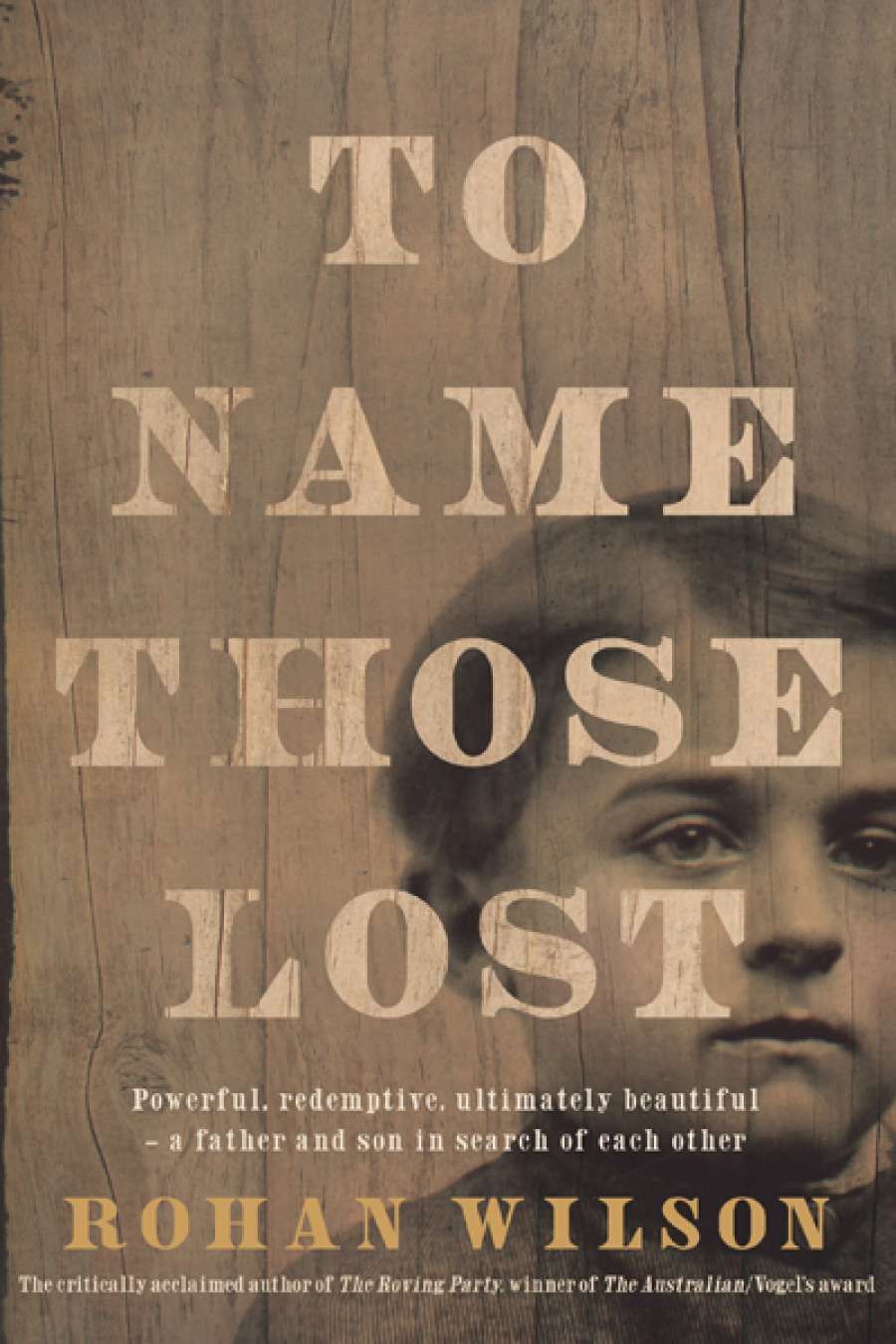
- Free Article: No
- Contents Category: Fiction
- Custom Article Title: David Whish-Wilson reviews 'To Name Those Lost' by Rohan Wilson
- Review Article: Yes
- Online Only: No
- Custom Highlight Text:
Rohan Wilson’s To Name Those Lost is a ferocious and brilliant sequel to his The Australian/Vogel’s Literary Award-winning début, The Roving Party (2011), which charted the murderous exploits of John Batman and his crew of cutthroats sent out on a punitive expedition to bring Tasmania’s northern Aborigines to heel, by way of terror and genocidal slaughter. The novel divided opinion: was it a realistic exploration of the dark past and birthing rites of the modern nation of Australia, or a gratuitous exercise in reproducing the trauma visited upon Tasmania’s indigenous population? Some Tasmanians may have tired of the representation of their bonny isle as a crucible of gothic violence and misery. Regardless, there is no denying the raw power and purity of intent of Wilson’s To Name Those Lost.
- Book 1 Title: To Name Those Lost
- Book 1 Biblio: Allen & Unwin, $29.99 pb, 298 pp
To Name Those Lost is set in 1874, forty-five years after The Roving Party. There is continuity between the pair in the form of Thomas Toosey, who had been the youngest of Batman’s charges. Now he is a sixty-year-old bushman, a man who has known severe deprivation and taken comfort in the bottle. As a result, Toosey has blown his chance at a stable and loving family life. When his wife dies, leaving Toosey’s only son alone in the world, eking out a living on Launceston’s tough streets, Toosey’s sole purpose in life and chance at redemption is to return from the backblocks of rural Tasmania, find his son, and start again. To this end, he steals a promissory note from his friend, the Irishman Fitheal Flynn.
So begins a journey home for Toosey, and a vengeful chase for Flynn and his daughter. Wilson shifts perspective between the main characters and some of the minor players, rounding out the picture of a society defined by poverty, brutality, and opportunism, whose only ameliorating feature is the clannish dependence upon family as a source of affection and loyalty. This fact gives the story its heart – fathers’ love for their children – but it is also what gives structure to the broader story arc as one of tragedy. That same redemptive love is also the sole point of vulnerability for the hardened men whose first instinct is self-preservation and who see ‘in the bullet, the knife, and the club a power that could make a man his own master’.
But Wilson’s characters are not ciphers standing in for these broader social forces and themes. All of them are fully humanised, their motives and hopes and frailties convincingly explored as the chase centres upon the town of Launceston, in the middle of a riot brought about by a government levying a tax on the poor for the sins of failed businessmen (whose parallel to the story of Launceston-based timber giant Gunns’ long dependence on government subsidies cannot be ignored).
Despite the inherent drama of what is essentially a chase narrative, culminating in an urban centre in the midst of chaos and rebellion, the pace of the novel is slow, but this is also its strength – Wilson uses the rudimentary technology of the period to its fullest effect. For example, one passage where Toosey waits at the base of a hill to mount a passing train that loses momentum as it climbs is used skilfully to create a sense of heightened tension when Flynn appears out of the bush. Wilson’s eye for the poetry of everyday moments, albeit darkly rendered, is deeply rooted in the diurnal rhythms of a pre-industrial age, allowing his characters to observe closely, and sense deeply. So, ‘little Sussex hens stepped with theatrical care among the weed and thistle’. In the emotionally charged Tasmanian bush, the ‘trees leaned, worked on by a current’. In the darkness of night, ‘stars hung like points of ice, looking singularly cold and distant’.
The closeness of the people to their environment shapes Wilson’s depictions of his characters. One man, a knife-sharpener, ‘had grown hump-backed and shaped around his contraption like a trimmed shrub’. A red-headed kid is ‘sired out of a fox’. The thuggish policemen sent in to quell the riot ‘rode big horses, the colour of sand; they seemed to dissolve in the dust they had made’.
Wilson’s vision of Launceston town is hellish, and some readers will question the relentlessness of his vision, his refusal to heighten the dark with contrasting moments of light (one episode in which children torture a cat felt like overkill), but this is not to detract from the novel’s vitality or its perfectly rendered dialogue. Wilson’s underdog characters speak in the argot of their period and class in ways that always feel authentic and that always add to their characterisation, while the language of the novel resists the overly baroque and lyrical, reined in by the characters’ matter-of-factness and Wilson’s eye for the smaller detail.
There is a purity of vision in To Name Those Lost’s consistency of tone and relentless drive to capture the dark poetry of dangerous times, and its depiction of the poignant suffering of ordinary people, in the manner of Chris Womersley’s magnificent The Low Road (2007) or of Goya’s The Disasters of War, albeit in this case broken down not into pictures, but into chapters, scenes, sentences, and phrases – each pure in its reflection of the whole.


Comments powered by CComment